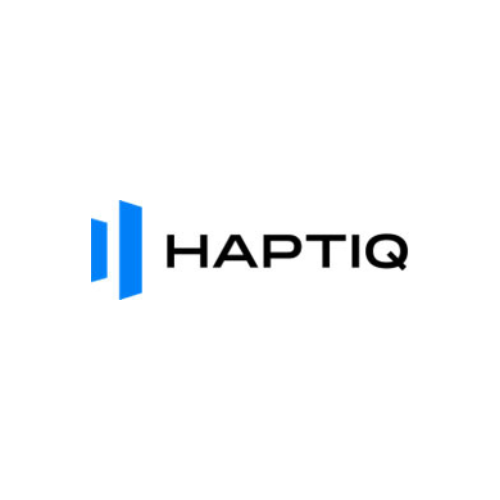Imagine a healthcare provider delivering vital home care, its potential stifled by inefficiencies and debt—until a private equity firm steps in, mitigates risks, and drives it to a blockbuster IPO. That’s the story of BrightSpring Health Services, acquired by KKR for $1.32 billion in 2019 and taken public in 2024 at a $2.5 billion valuation after streamlining operations and reducing debt Reuters.
Private equity (PE) excels at navigating uncertainty, using private equity strategies to protect capital while chasing outsized returns. Risk management—through meticulous due diligence, strategic diversification, and hands-on oversight—forms the core of these strategies, turning volatility into opportunity.
From leverage to market swings, firms that master risk build portfolios that thrive. This article unpacks how private equity strategies like deep evaluations and active guidance ensure stability, with Haptiq’s Pantheon Value Creation driving smarter, safer bets. Ready to fortify your investments for the long haul?
Risk Management Techniques
Risk management is the foundation of private equity strategies, safeguarding investments while unlocking growth. For clarity, this section avoids hypothetical metrics, focusing on proven concepts and verified examples like BrightSpring and Canada Goose, with illustrative scenarios provided separately below.
Through comprehensive due diligence, portfolio diversification, and active oversight, firms create resilient portfolios that navigate market, operational, and financial challenges effectively.
Comprehensive Due Diligence
Due diligence is a critical private equity strategy, laying the groundwork for informed investments. Firms conduct exhaustive evaluations to understand a target’s strengths, risks, and potential, ensuring alignment with portfolio goals. This rigorous process minimizes uncertainties and maximizes value creation. Key areas include:
- Financial Analysis: Firms dive into revenue models, expense structures, and debt obligations to gauge stability. They audit cash flows and financial controls, verifying sustainability under stress. Reliable financials ensure a company can weather economic shifts.
- Competitive Landscape: Firms benchmark competitors, analyzing market share, pricing strategies, and innovation pipelines. They assess customer loyalty and barriers to entry, like patents, to confirm durability. A strong market position signals long-term viability.
- Growth Potential: Firms evaluate scalability, exploring opportunities like geographic expansion or new offerings. They scrutinize management’s track record and strategic plans, ensuring executable visions. Clear growth paths drive investment upside.
Due diligence is essential across private equity deals, from buyouts to startups. KKR’s acquisition of BrightSpring for $1.32 billion in 2019 leaned on deep financial and regulatory analysis, identifying operational inefficiencies to address before its $2.5 billion IPO in 2024, securing a stable launch.
Portfolio Diversification

Diversification is a vital private equity strategy, reducing risk by spreading investments across varied assets. By balancing exposure, firms protect portfolios from sector slumps or regional volatility, capturing diverse growth opportunities. Strategic allocation and ongoing adjustments are key. Core elements include:
- Sector Variety: Firms invest in industries like healthcare, technology, and industrials to hedge sector-specific risks. Pairing volatile sectors, such as consumer goods, with stable ones, like utilities, balances performance. Diverse sectors stabilize returns during market swings.
- Global Presence: Investments across regions—from North America to emerging markets—mitigate localized economic risks. Firms target markets with complementary dynamics, like high-growth Asia versus mature Europe. Geographic diversity cushions regional downturns.
- Stage Mix: Combining early-stage ventures, scaling firms, and mature businesses balances risk and reward. Firms back startups for high potential while relying on established companies for consistency. Varied stages create a dynamic portfolio.
Diversification strengthens broad portfolios. Bain Capital’s strategy with Canada Goose, part of a diverse consumer and retail portfolio, mitigated fashion industry risks through global sourcing and brand focus, paving the way for its $1.8 billion IPO in 2017.
Active Oversight
Active oversight is a hands-on private equity strategy, driving portfolio companies toward goals through direct engagement. Firms often take board seats, shaping strategy and operations to enhance performance and reduce risks. This approach ensures agility and accountability. Key practices include:
- Strategic Direction: Firms guide management on priorities, like entering new markets or refining products, aligning with industry trends. They foster innovation, such as technology adoption, to stay competitive. Strategic input sharpens growth trajectories.
- Operational Enhancements: Firms optimize processes, from supply chains to customer service, boosting efficiency. They introduce tools like data analytics to strengthen decision-making, minimizing disruptions. Streamlined operations build resilience.
- Performance Tracking: Firms monitor key metrics, like revenue trends or customer retention, through regular reviews. They use real-time insights to address issues proactively, adjusting plans as needed. Continuous tracking maintains alignment with objectives.
Active oversight excels in controlled investments, like buyouts. BrightSpring’s turnaround under KKR’s board guidance streamlined care delivery, supporting its $2.5 billion IPO, while Canada Goose’s oversight by Bain refined global operations, ensuring IPO success.
Illustrative Scenarios
To offer deeper context, these hypothetical scenarios, inspired by industry trends, use figures to demonstrate how private equity strategies manage risks across complex portfolios. They are separate from the main narrative to maintain clarity and focus.
Imagine a private equity firm managing a retail-focused portfolio during a consumer spending downturn. A potential 15% revenue decline in discretionary goods threatens high-margin brands, but diversification into healthcare and technology limits overall portfolio losses to 5%.
The firm shifts select retail operations to emerging markets with growing demand, reducing exposure further. Hedging strategies, costing $3 million upfront, lock in commodity prices for supply chains, saving $12 million over two years by mitigating raw material volatility. Regular portfolio reviews adjust sector allocations, boosting stability metrics like cash flow consistency, ensuring the portfolio weathers the slump with minimal disruption and positions for recovery.
In another case, a logistics portfolio company faces operational risks from labor shortages and aging infrastructure. A potential strike could halt operations, costing $10 million in delays, while equipment failures risk $5 million in downtime.
The firm invests $2 million in training to enhance workforce retention, cutting turnover by 60%, and allocates $5 million for automation upgrades, improving throughput by 10%. Board-led oversight introduces real-time tracking systems, saving $3 million annually through optimized routing.
These measures, guided by monthly performance audits, strengthen operational resilience, reduce long-term costs, and position the company as a market leader, showcasing proactive risk management.
Balancing Risk and Reward

Balancing risk and reward is a defining private equity strategy, tailoring approaches to each investment’s risk profile and return potential. Firms align strategies with portfolio objectives, navigating trade-offs across investment types. Each approach requires unique risk management to optimize outcomes. Key types include:
- Buyouts: Acquiring controlling stakes in stable companies emphasizes operational efficiency. Firms mitigate risks through deep due diligence and oversight, ensuring reliable cash flows. Buyouts offer steady returns with controlled exposure.
- Growth Capital: Funding scaling firms involves market and execution risks. Firms diversify investments and guide expansion strategies, protecting growth potential. Growth capital balances high rewards with strategic safeguards.
- Distressed Assets: Investing in troubled companies carries financial and operational risks. Firms use rigorous analysis and active restructuring to revive value, managing volatility. Distressed assets pair high upside with disciplined controls.
BrightSpring’s buyout by KKR balanced debt and regulatory risks with operational tweaks, achieving a $2.5 billion IPO. Canada Goose’s growth capital from Bain managed brand and market risks, securing a $1.8 billion IPO through global focus.
Conclusion
Private equity strategies transform uncertainty into strength through meticulous planning and execution. Rigorous due diligence uncovers hidden risks, paving the way for confident investments. Diversification across markets and sectors shields portfolios from volatility, fostering stability.
Hands-on oversight ensures companies adapt swiftly, maximizing potential. Together, these approaches craft resilient portfolios ready for any challenge. Haptiq’s Pantheon Value Creation powers these private equity strategies with cutting-edge insights, optimizing risk and reward. Embrace these tools to build investments that endure and excel.
FAQ Section
- How does due diligence support private equity strategies?
Due diligence is a cornerstone of private equity strategies, thoroughly assessing a target’s financial health, competitive position, and growth potential to minimize risks.
By auditing revenues, mapping competitors, and modeling expansion scenarios, firms uncover issues like hidden debts or market vulnerabilities that could derail returns. This proactive process ensures investments are grounded in data, aligning with high-return goals while avoiding costly surprises.
- Why is diversification critical in private equity risk management?
Diversification is vital in private equity strategies as it spreads investments across industries, regions, and business stages to shield portfolios from market shocks.
For instance, allocating capital to healthcare or technology alongside consumer goods can offset sector-specific downturns, while global exposure mitigates regional risks like currency fluctuations. This balanced approach stabilizes returns, preserving upside potential and targeting consistent IRRs even in volatile conditions.
- What role does active oversight play in private equity strategies?
Active oversight is a defining private equity strategy, using board representation and operational guidance to transform portfolio companies into high-value assets.
Firms set rigorous KPIs, like revenue growth or margin improvements, and intervene swiftly if targets lag, ensuring alignment with exit goals. This hands-on approach drives efficiencies, such as cost cuts or market expansions, often doubling valuations by exit readiness.



.png)

.png)

.png)




















